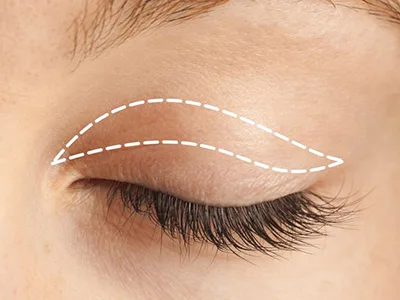As we age, our skin undergoes various changes, including a loss of elasticity, thinning, and sagging. These changes are especially noticeable around the eyes, where drooping eyelids and bags can create a tired, aged appearance. Eyelid Surgery in Dubai, or blepharoplasty, is a popular cosmetic procedure designed to rejuvenate the eyes by addressing these concerns. This article explores the reasons for considering eyelid surgery for aging eyes, the procedure itself, recovery expectations, and potential benefits.
1. Understanding Aging Eyes
a) Common Changes
Aging can lead to several noticeable changes in the eye area:
- Sagging Eyelids: The skin above the eyes may droop, causing a tired appearance and sometimes obstructing vision.
- Under-Eye Bags: Fat deposits can accumulate under the eyes, leading to puffiness and a less youthful look.
- Wrinkles and Fine Lines: Skin around the eyes can develop crow's feet, fine lines, and wrinkles due to sun exposure and reduced collagen production.
b) Impact on Vision and Quality of Life
In some cases, sagging eyelids can obstruct peripheral vision, affecting daily activities like reading or driving. Beyond physical concerns, these changes can also impact self-esteem and confidence, leading individuals to seek solutions.
2. What Is Eyelid Surgery?
a) Definition and Purpose
Eyelid surgery (blepharoplasty) is a surgical procedure that involves the removal of excess skin, fat, and muscle from the upper and/or lower eyelids. The primary goals of eyelid surgery are:
- To restore a youthful appearance to the eyes.
- To improve vision obstructed by drooping eyelids.
- To enhance facial aesthetics by creating a more refreshed look.
b) Types of Eyelid Surgery
- Upper Blepharoplasty: This procedure focuses on removing excess skin and fat from the upper eyelids, addressing drooping and enhancing the natural contour of the eyes.
- Lower Blepharoplasty: This procedure targets puffiness and bags under the eyes by removing or repositioning fat, tightening the skin, and smoothing wrinkles.
3. Candidacy for Eyelid Surgery
a) Ideal Candidates
Individuals considering eyelid surgery should meet certain criteria:
- Age: While many patients are over 30, the procedure can be beneficial for younger individuals with hereditary eyelid issues.
- Health Status: Candidates should be in good overall health, with no significant eye conditions that could complicate the surgery, such as glaucoma or dry eye syndrome.
- Realistic Expectations: Good candidates have realistic expectations regarding the outcomes and are motivated by personal reasons rather than external pressures.
b) Consultation Process
A thorough consultation with a board-certified plastic surgeon is essential to determine candidacy. During this meeting, the surgeon will:
- Evaluate the condition of the eyelids and surrounding skin.
- Discuss medical history and any existing eye conditions.
- Explain the procedure, expected outcomes, and potential risks.
4. The Eyelid Surgery Procedure
a) Pre-Operative Preparation
Before surgery, patients will receive specific instructions, which may include:
- Avoiding blood-thinning medications (e.g., aspirin, ibuprofen).
- Arranging for someone to accompany them to the surgery and drive them home afterward.
b) Surgical Process
Eyelid surgery typically takes one to three hours and can be performed under local anesthesia with sedation or general anesthesia, depending on the extent of the procedure. The process generally involves:
- Incisions: For upper eyelids, incisions are made along the natural crease, while lower eyelid incisions may be made just below the lash line or inside the lower eyelid (transconjunctival approach) to minimize visible scarring.
- Tissue Removal and Repair: The surgeon removes excess skin and fat and tightens the underlying muscles before closing the incisions with fine sutures.
5. Recovery and Aftercare
a) Immediate Post-Operative Care
After surgery, patients can expect:
- Swelling and Bruising: Common side effects that typically resolve within 1-2 weeks.
- Discomfort: Mild to moderate discomfort may be managed with prescribed pain medication.
b) Long-Term Recovery
Most patients can return to normal activities within 10 to 14 days. However, it may take several weeks for swelling to completely subside and for the final results to be fully visible. Surgeons typically recommend:
- Cold Compresses: To reduce swelling and discomfort.
- Avoiding Strenuous Activities: To promote healing during the initial recovery period.
6. Benefits of Eyelid Surgery
a) Cosmetic Improvements
Eyelid surgery can provide significant aesthetic benefits, including:
- A more youthful, refreshed appearance.
- Reduction of under-eye bags and puffiness.
- Improved eyelid contour and symmetry.
b) Functional Improvements
For patients with sagging eyelids that obstruct vision, blepharoplasty can enhance:
- Peripheral vision, allowing for better visibility and safety during daily activities.
- Overall quality of life, as patients often feel more confident and engaged in social situations.
c) Longevity of Results
While aging continues, the results of eyelid surgery can last for many years, with many patients enjoying a more youthful appearance for 5 to 10 years or longer, depending on individual factors such as skin type and lifestyle.
7. Conclusion
Eyelid surgery is an effective solution for addressing the visible signs of aging around the eyes. By removing excess skin and fat, this procedure can rejuvenate the eyes, enhance appearance, and improve overall quality of life. If you’re considering eyelid surgery for aging eyes, consult with a qualified and experienced surgeon to discuss your goals, evaluate your candidacy, and understand the potential benefits.
With proper care and maintenance, eyelid surgery can lead to lasting results that allow you to face the world with renewed confidence and a more youthful, vibrant appearance.





Comments